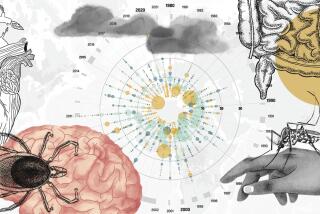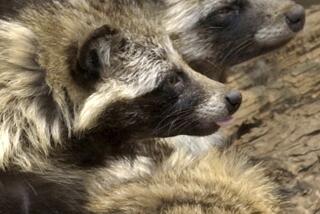Op-Ed: This new coronavirus was preventable. But we never seem to learn the lessons of former outbreaks

In recent days, in the largest quarantine effort in history, Wuhan city in China was put on lockdown and the Chinese government imposed wide-ranging restrictions on both domestic and foreign travel. The actions are aimed at containing a brand-new coronavirus called 2019-nCoV, which as of Monday had killed more than 80 people and sickened nearly 3,000 in China.
But the quarantine’s effectiveness is far from certain. Local transmission may be reduced, but the virus has already spread beyond China, with cases as far afield as Thailand, South Korea, Vietnam, Japan and the United States.
And even if the quarantine is effective, it doesn’t address the far bigger issue: How do we stop this from happening again?
The emergence of this new virus was predictable, even inevitable. To understand why requires looking back to an earlier virus that emerged in China, SARS. Like the new illness, SARS was caused by a coronavirus. In 2003, it exploded out of a “wet market” in Guangdong where civet cats, raccoon dogs and multitudes of other animals were caged together in tight, squalid conditions.
It appears the new virus has similar origins. The initial victims were all connected to a huge wholesale market in Wuhan, where a thousand stalls housed untold numbers of live animals kept in crowded, filthy conditions. Such “wet markets” are widespread in China, providing a newly affluent upper class with status-enhancing exotic animals to serve at dinner. Some people also believe that eating wild animals has health benefits.
The problem with the markets is that the unsanitary and tightly packed conditions in which the animals are held create perfect environments for the evolution of viruses that can jump from one species to another. The Chinese government shut down wet markets after the SARS outbreak, but that ban was short-lived.
With SARS, the virus came initially from bats and then was passed, apparently, to civet cats and eventually to humans. Initial indications point to the new coronavirus, too, having come from bats, but it isn’t yet known how it made its way to humans.
Coronaviruses have proven themselves masters at jumping from one species to another, and how they affect each species can differ greatly. An infection hardly noticeable in a wild animal, perhaps a civet cat, may spread easily to the next cage, whether that cage houses more civets or another mammalian species. With coronaviruses, the jump from species to species appears to happen fairly easily.
The massive poultry farms of Asia, which may house as many as 5 million chickens, present a different but also potentially lethal source of human infection. There, viruses such as influenza become highly adapted and, in crowded circumstances, ever more deadly to chickens, as there is no cost to the virus if it’s lethal — the next host is only a beak away. These virulent avian influenzas can and have killed people. But humans have to catch them directly from the birds. Because they have become so precisely adapted to chickens, the viruses have little potential for human-to-human transmission.
The same evolutionary process can occur on massive pig farms, and can be even more dangerous to people, since people are more like pigs than like chickens. The deadly 2009 swine flu pandemic sprang out of one such massive pig farm in Veracruz, Mexico, where hundreds of pigs died in an outbreak that eventually moved into people.
Caging different wild beasts together by the hundreds or thousands, as in a wet market, can produce a particularly dangerous environment for infectious diseases like coronaviruses. Not only is there an array of possible host species, but large numbers of humans are brought into close contact with the animals, too.
With SARS, as well as the new coronavirus, it appears that the virus jumped first to the people working with these animals in the market, and then began another process of evolution, which allowed it to spread from human to human, adapting to its new host species and becoming more effective at that adaptation all the time. As a result of such evolution, we get brand-new human diseases like 2019-nCoV, which did not exist only months ago.
It’s too early to know what kind of threat the present virus poses. What’s important is that we finally learn the right lesson.
If we want to forestall the evolution of ever-newer, and possibly deadlier, human-adapted viruses, live animal markets must be permanently shut down. Until the Chinese government outlaws these markets, until factory farms housing millions of animals are eliminated, until we take the inevitable logic of disease evolution into account, novel, and potentially deadly, human diseases will continue to arise. Again. And again. And again.
Wendy Orent is the author of “Plague: The Mysterious Past and Terrifying Future of the World’s Most Dangerous Disease” and “Ticked: The Battle Over Lyme Disease in the South.”
More to Read
A cure for the common opinion
Get thought-provoking perspectives with our weekly newsletter.
You may occasionally receive promotional content from the Los Angeles Times.






